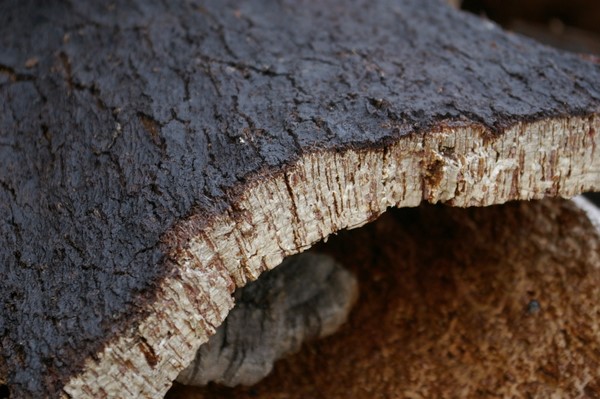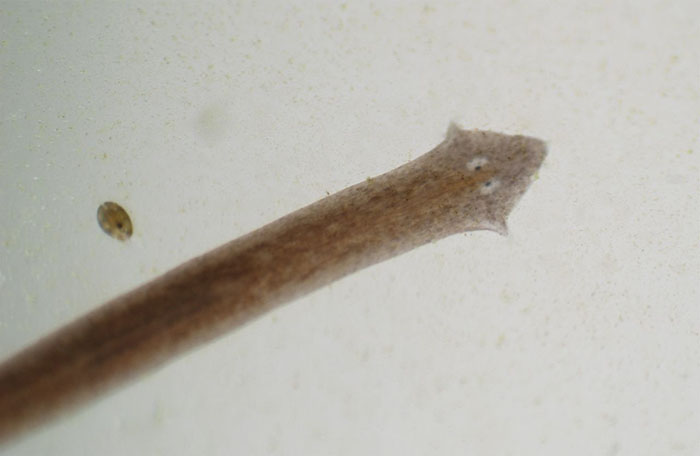Do you love wine? Do you love sound of the corkscrew doing its job? Or how about the sound of the cork actually making it out of the bottle? These are sounds that are music to my ears. It means the day is over, and I can unwind and enjoy the rest of the evening.
while it is sleeping in your cellar.
Scientifically, cork cambium is a tissue in vascular plants (also known as tracheophytes) These are plants that have both xylem,for transporting water and nutrients and phloem for transporting photosynthetic products throughout the plant. (When you try to get yourself out of trouble with the Mrs., and pick up those colored carnations in the supermarket, these colored flowers are available to you because of the action of the xylem. ) Watch the short video to show the process.
Cork cambium is what is responsible for secondary growth that creates a portion of the bark of a tree. Technically, it creates the “cork” of the tree that is just inside that rough stuff you see and call the bark. Its function is to protect the vital tissues inside. Similarly to your rib cage protecting your heart and lungs.
The outer bark of the cork oak tree (Quercus suber) is harvested in the Spring or Summer. These seasons are chosen for harvesting because the tree is in a period of rapid growth. That in itself is intriguing because anyone who tends a garden knows you typically trim back and do your major gardening while the plants are dormant. Trimming back a plant while in it optimum growth period can kill the plant. But with the cork tree, because it is in this growth period, the cork is removed very easily and with little stress or damage to the tree. Research has shown, that although the process does stun the tree, it quickly regenerates. Harvesting is still done by hand, using an special ax, since there is no mechanized way to get the same results. So as you can imagine, it is a time consuming process.
 |
| Reproductive Cork |
 |
| Virgin Cork |
 |
| Amadia Cork |
Similarly to grape vines, you can not harvest the fruits of your labor for several years after planting. In fact, grape vines produce at a much faster rate. Virgin cork, which is not suitable for wine corkage but is what you see in terrariums and reptile habitats, is not removed until the 25th year. The second harvest takes place in another 9-12 years, and is known as reproductive cork. This harvest produces cork that is too hard for wine corkage, but is typically used in flooring. It isn’t until about forty years that the third harvest, amadia cork, is harvested and suitable for wine. That is a lot of invested time! After this harvest, the tree is viable for about another 150 years.
Historically speaking, cork has been used for Amphora have been discovered from this time period that still contained wine and was sealed with a cork. Also from this period, Pliny the Elder made many references to cork oaks. He frequently mentions that the trees were symbols of liberty and honor and and that only priests were allowed to cut them down. He relays information about the trees being consecrated to the god of Olympus and how its leaves were used to crown the most successful athletes.enturies. The first reference to a cork oak was in the 4th century BC when the Greek philosopher,Theophrastus, mentioned this tree’s ability to regenerate itself after the bark has been removed. As for the relationship between wine and cork, it dates even further back to the 1st century BC.
Once the amadia cork is removed from the tree, it still must be turned into the actual cork stopper. This in itself is quite a process. The planks of cork are stacked together and boiled for about an hour. You can envision what this does. It is similar to a sponge being placed in water. This allows for the water to get into all of the individual cork cells to expand to maximize size. Once these cells have fully expanded, it allows the plank to become flatter, more pliable, and smoother. After a resting period of about three to four weeks, the planks are sliced into strips. These strips are about the length and approximately twice the depth of a finished cork. The finished cork is punched out of this strip. The differences in the size of the cork are determined by the size and thickness of the plank it was cut from. After the corks have been cut, they are sorted and sterilized using one of three methods (hydrogen peroxide solution, use of microwaves, or use of ozone). This five minute video shows you the entire process.
The process of producing a cork is extremely environmentally friendly from start to finish. The cork is harvested by a renewable source, and all the unused scrap cork is collected to be used in other cork products. Cork is found in badminton shuttlecocks (yes, that is the real name for a “birdie”) and because of its natural resistance to fire it is also used as sound and thermal insulation in homes. Due to its low density, it is used in fishing rods and fishing floats. Finally, the most obvious use is cork boards and cork floor and wall tiles. Maybe this is one of the reasons there is the saying “The Mighty Oak” because this tree is definitely amazing. There aren’t many advanced organisms that can regenerate itself. I mean a planaria can, but geez, there isn’t much to regenerate. Although, I do think they are pretty cute. (I know, its the science geek in me) Think about how amazing it is to be able to regenerate something that is so important to your protection. Remember, the cork is there to protect that vascular tissue that is responsible for making sure the plant lives. That is pretty darn impressive if you ask me.
Maybe this is one of the reasons there is the saying “The Mighty Oak” because this tree is definitely amazing. There aren’t many advanced organisms that can regenerate itself. I mean a planaria can, but geez, there isn’t much to regenerate. Although, I do think they are pretty cute. (I know, its the science geek in me) Think about how amazing it is to be able to regenerate something that is so important to your protection. Remember, the cork is there to protect that vascular tissue that is responsible for making sure the plant lives. That is pretty darn impressive if you ask me.
~Slainte!

